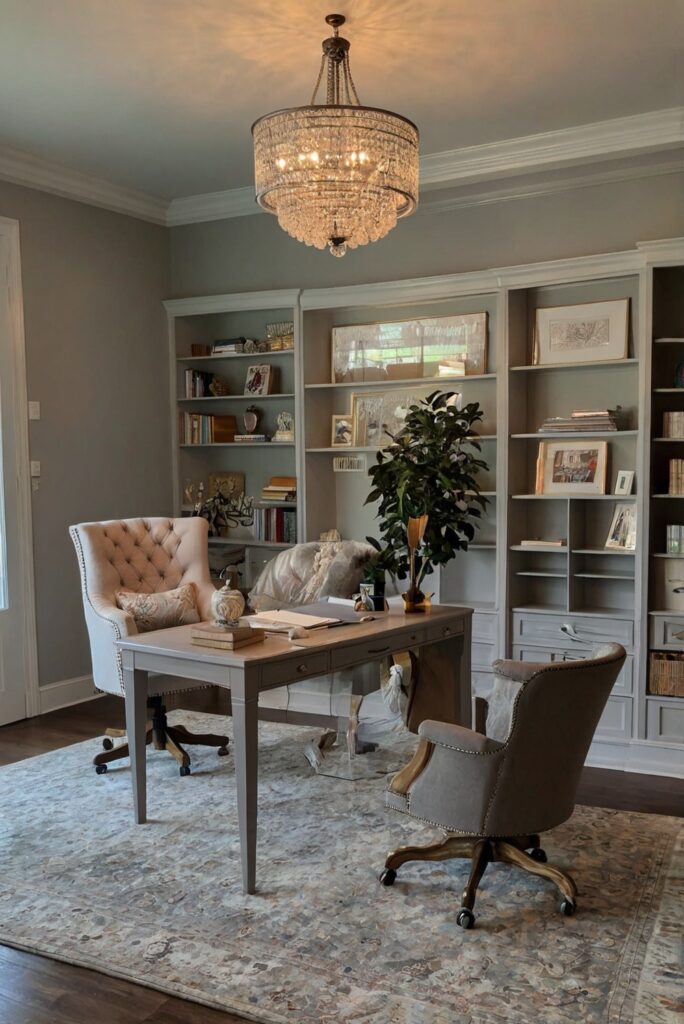Looking to improve your financial planning routine? Explore practical tips and creative ideas for organizing your home office desk as an interior designer for optimal productivity.
How to Organize a Home Office Desk for Financial Planning?
As a part of my daily routine, I ensure that my home office desk is well-organized for financial planning. I utilize home decorating and interior design ideas to create a conducive work environment. Space planning is key to keep the desk clutter-free yet functional. To achieve this, I designate specific areas for important documents, stationery, and electronic devices. By incorporating interior design space planning techniques, such as using organizers and proper storage solutions, I optimize the available space. This approach not only enhances the aesthetics of my workspace but also boosts productivity in financial planning tasks.
How to Organize a Home Office Desk for Financial Planning?
When it comes to managing your finances effectively, having a well-organized home office desk can make a significant difference. A clutter-free workspace can help improve productivity, reduce stress, and ensure that you have easy access to all the tools and resources you need for financial planning. Here are some tips on how to organize your home office desk for financial planning:
1. Declutter and Prioritize
Start by decluttering your desk and getting rid of any unnecessary items. Keep only the essentials that you use regularly for financial planning, such as a computer, calculator, notepads, pens, and any relevant documents. Prioritize items based on how frequently you use them and their importance to your financial tasks.
2. Establish a Filing System
Create a filing system to organize your financial documents, bills, receipts, and other paperwork. Use folders, binders, or filing cabinets to categorize and store documents based on their type or date. Label each folder clearly to make it easy to locate specific documents when needed.
3. Invest in Storage Solutions
To keep your desk clutter-free, invest in storage solutions such as shelves, drawers, trays, and organizers. Use these storage options to keep your desk tidy and store items like stationery, office supplies, and reference materials neatly. Utilize vertical space by installing shelves or wall-mounted organizers to maximize storage.
Additional Tips for Organizing Your Home Office Desk:
4. Create Zones
Divide your desk into different zones based on the tasks you perform. Have a dedicated area for writing, computing, organizing files, and any other specific financial planning activities. This will help you work efficiently and maintain a structured approach to your tasks.
5. Personalize Your Workspace
Make your home office desk a welcoming and inspiring space by adding personal touches such as photos, plants, motivational quotes, or artwork. A well-decorated workspace can boost your mood and productivity, making it easier to focus on your financial planning tasks.
In conclusion, organizing your home office desk for financial planning is essential for staying focused, efficient, and productive in managing your finances. By decluttering, prioritizing, establishing a filing system, investing in storage solutions, creating zones, and personalizing your workspace, you can create an environment that supports your financial goals and helps you stay on track with your financial planning tasks. Remember to regularly review and update your organization system to ensure that your desk remains functional and conducive to effective financial planning.
1. Declutter:
One of the most important steps in organizing a home office desk for financial planning is to declutter. Remove any unnecessary items, papers, or supplies that are not related to your financial tasks. A clutter-free workspace can improve productivity and focus.
2. Create a System:
To effectively organize your home office desk, establish a system for managing your financial documents, bills, and budgeting tools. Use folders, trays, or digital tools to categorize and store important paperwork for easy access.
3. Utilize Space Efficiently:
Maximize the space on your desk by using organizers, shelves, or storage containers. Keep frequently used items within reach and store less-used items in designated areas to maintain a clean and organized workspace.
4. Establish a Routine:
Set aside time each day or week to review your financial documents, update your budget, and plan for upcoming expenses. Consistent financial planning practices can help you stay organized and on top of your financial goals.
5. Personalize Your Workspace:
Add personal touches, such as motivational quotes, photos, or plants, to create a comfortable and inspiring work environment. A well-decorated desk can boost creativity and productivity while managing your finances effectively.

